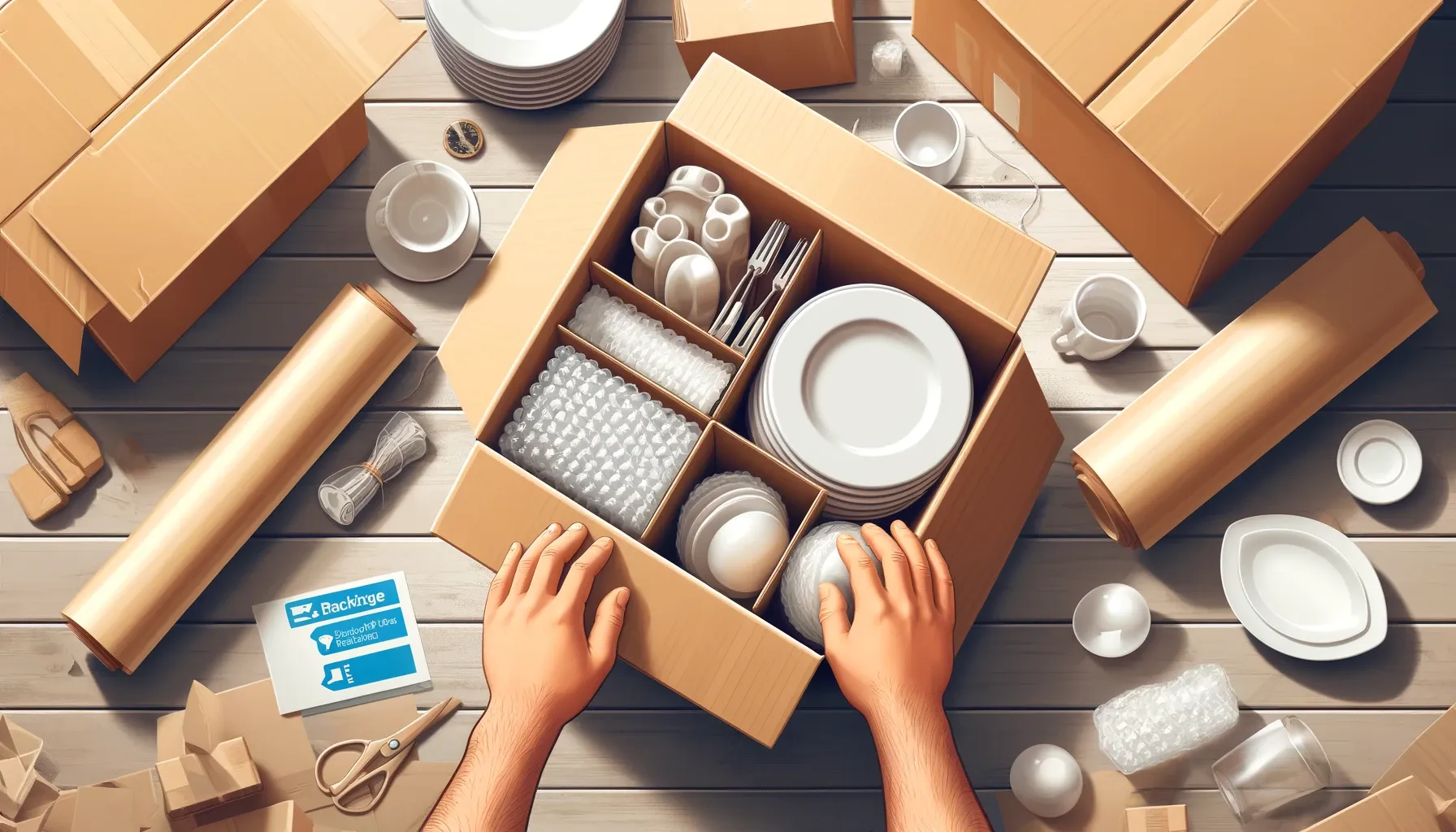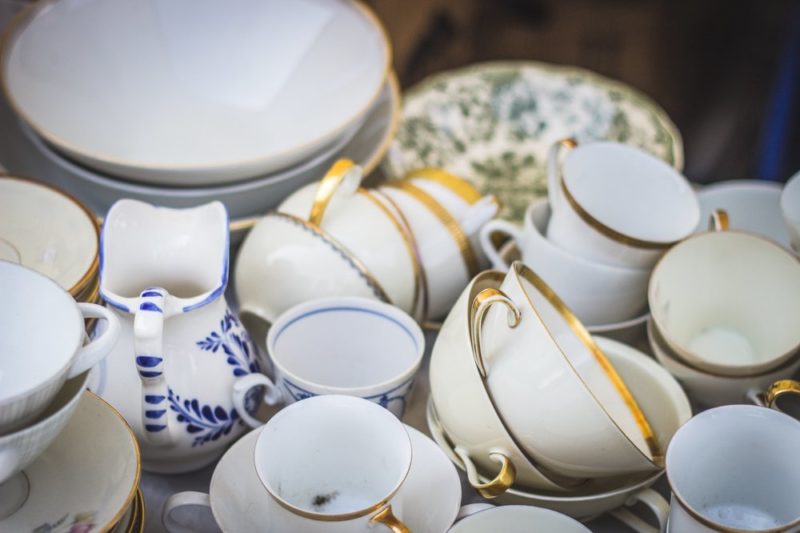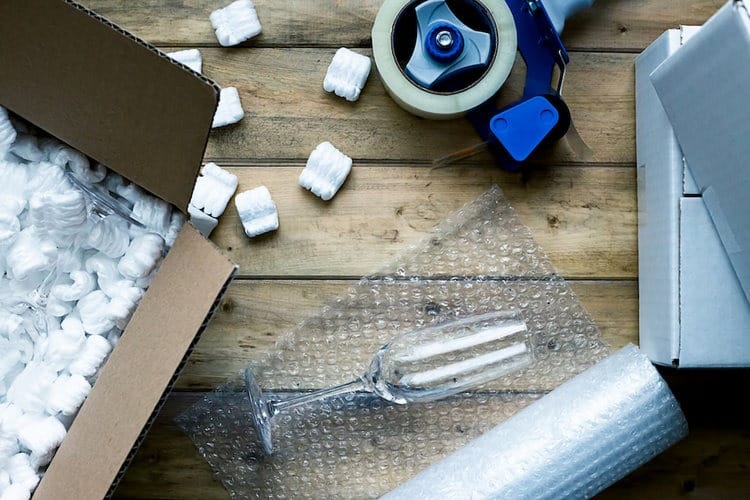Tips for Efficiently Packing Dishes and Preventing Plate Breakage
Many of us have experienced the frustration of arriving at a new home, only to discover that a few glasses have broken during the move.


Many of us have experienced the frustration of arriving at a new home only to discover that a few glasses have broken during the move. If you've ever had to say goodbye to a beloved wine glass while moving, you may wonder how to pack dishes to avoid any losses properly. When it's time to start packing and you're working through your moving checklist, it's important to know how to safely pack dishes to ensure a stress-free moving day and intact dishes.
Essential Packing Materials for Safely Packing Dishes
When it comes to packing dishes, the key is to have enough "wiggle room". The goal is to minimize any extra space while still ensuring the safety of your dishes. To achieve this, packing paper is the most essential ingredient. It takes up less space compared to bubble wrap, but provides enough protection for fragile dishes such as glassware and fine China. It is recommended to have an ample supply of packing paper. As for other packing materials, the list is straightforward.
Below is a list of items that are necessary for safely packing dishes:
- Paper for packing
- Boxes specifically for dishes
- Boxes of medium size
- Tape for packing
- Labels and markers for identification
To avoid any potential damage to your dishes, it is recommended that you skip using bubble wrap and forgo reading the printed newspaper as the newsprint ink can leave stains. Even though the ink can typically be removed through washing, there is still a possibility that it may permanently stain your dishes.
What is the purpose of a dish box?
Dish boxes are specifically crafted to store delicate items such as dishes, making them more durable and thicker compared to other boxes. The additional padding protects against any impacts and ensures secure transport. In case of any movement or unintended bumps during transit, your dishes will be better safeguarded in a dish box. When determining the number of boxes required for your move, it is advisable to include a few dish boxes.

Steps for Packing Dishes: General Guidelines
Looking for tips on how to pack dishes without risking any breakage? The following basic steps can be applied to most dishes. However, continue reading for specific advice on keeping the stems intact on your wine glasses and preventing chips on your plates.
There are five main steps to consider when learning how to pack dishes for a relocation.
Step 1: Gather all the boxes and securely tape them. Depending on the type of dishes you have, they can be heavy, so thoroughly tape the boxes to avoid them collapsing.
Step 2: To ensure proper cushioning, use packing paper to create a layer at the bottom of each box. Instead of folding the paper, crumple it. Continue adding crumpled paper to the box until it reaches a height of approximately six inches.
Step 3: Begin by placing the dish you are preparing to pack in the center of the packing paper on a level surface. Carefully encase each dish with the paper, ensuring it is fully covered. Then, use tape to secure the wrapped dish and gently place it inside the box.
Step 4: When packing dishes into boxes, it is important to begin with the heavier items first. Lighter items, such as glasses, should be placed on top of the heavier items in the moving boxes. Continue filling the box with dishes until it is full, and utilize additional paper or soft materials to fill any remaining gaps.
Step 5: After you have wrapped and packed your dishes, place balled-up paper on top of the box for extra protection, following the same method used for the bottom of the box. Seal the box with tape and label it, making sure to specify the room it belongs in and that the items inside are fragile. To ensure proper handling during the move, it is recommended to add the phrase "this end up" on boxes containing dishes.
Useful Tip: Avoid overloading the dish boxes with too much weight. It can happen easily, so make sure to be mindful of the amount you're putting in each box and aim to keep it under 45 pounds.
Make your move smoother and more manageable with Drifted AI.similarly
Steps for packing bowls and plates
Although bowls and plates come in various shapes and sizes, they can be packed similarly. There are no handles or protruding pieces, so these dishes are relatively easy to pack. However, they tend to be the heaviest, so it is recommended to pack them in the boxes first.
When it comes to packing bowls and plates, there are two options available: individually or in bundles. While stacking them together may seem quicker and simpler, it could lead to some breakage in the layers. On the other hand, taking the extra time to wrap each item individually can potentially prevent any damage and save you from replacing broken dishes.
Packing delicate items such as fine China or valuable dishes may require some extra time, but it is essential in ensuring their safe arrival. It is important to put in additional effort when considering the best way to pack your dishes.
To begin, spread out your packing paper onto a flat surface or table. Next, position the dish in the center. Fold one corner of the paper towards the center of the dish at a time until all four corners meet in the middle. Then, fasten the paper in place with tucking or tape. Finally, place each dish vertically into the box, like loading a dishwasher.
Follow this process for every dish until the bottom of your container is filled. Place lighter dishes on top of heavier ones, and begin a new container when the first layer is finished.
Tips for packing cups, mugs, and glasses
Dishes like cups and mugs can be packed similarly to small bowls. While they will require sufficient packing paper, they are typically sturdier than glasses with stems.
To ensure the safety of your cups, mugs, and glasses during packing, first fill them with bunched packing paper. After that, you may use a single or double layer of paper to wrap the items.
Begin at a single corner of the packing paper, placing your dish at an angle. Roll the dish toward the opposite corner of the paper. Simultaneously, tuck in any extra paper to provide additional safeguarding.
For those who believe their dishes are sturdy, bundling two dishes using a single sheet of paper is possible. Begin by placing the first dish on the paper and rolling it halfway. Then, add the second dish beside the first and continue rolling until the end of the paper. This technique is most effective when using the same type of cup, so keep your coffee mugs together and wrap your shot glasses separately.
Tips for Packing Stemware
Stemware is probably the most fragile among all your dishes, making it more prone to breakage. Glass or crystal is delicate throughout, hence it is essential to have a proper packing method for these dishes before beginning the task.
Before wrapping, carefully place packing paper balls in the bowl of each glass to provide support. Next, position the glass at an angle in a corner of the packing paper. Roll the glass towards the opposite corner while tucking and crumpling the paper around it.
To effectively utilize any additional large packing paper, you may consider wrapping a pair of glasses with a single sheet. Begin by wrapping the first glass with half a sheet of paper, then place the second glass next to it. Continue rolling and wrapping until the glasses are fully covered in paper.
Using your hands to locate the edges underneath the paper, ensure that every section of the glass is completely protected. If you can sense the glass's presence, proceed to encase it with an additional layer of paper.

When it comes to packing, some of the most delicate items that require special attention are dishes and stemware.
Tips for packing pots and pans
You might be inclined to forgo the pots and pans when contemplating the best dish-packing method. However, it is not advisable. While pots and pans are less prone to breaking, they can still suffer damage during transportation. Non-stick pans, in particular, are vulnerable to scratches, and all types of cookware are susceptible to dents.
Safeguard your cooking utensils by using an ample amount of packing paper. Begin by laying the pots and pans on the paper and gradually fold each corner towards the center. For added protection, stuff packing paper into the interior of any pots to reinforce them.
Although pots and pans require additional cushioning on their surfaces, they do not necessarily have to be transported in containers specifically designed for dishes or barrels. Standard, medium-sized packing boxes should suffice.
Additional suggestions for packing dishes
In addition to buying a sufficient amount of packing paper to wrap a small village, there are several other pointers and techniques to be aware of. Here are the key things to keep in mind as you gain expertise in packing dishes:
- Start by packing heavier items at the bottom of the box
- Stack dishes vertically to prevent breakage
- Instead of using packing paper, utilize towels to save space
- Make sure to cushion all items and fill any empty spaces in the box
- Clearly label each box as "fragile" and indicate which side should be facing up
- Handle dish boxes with care when loading them into the moving truck
- Avoid packing boxes that are too heavy, with a maximum weight of 45 pounds
- Pack each box to its full capacity.
Once you are prepared, you can obtain packing paper and boxes, carefully pack your dishes, and confidently arrive at your new destination. You can now proudly unveil your expertly packed glasses and begin to celebrate.
Make your move smoother and more manageable with Drifted AI.

